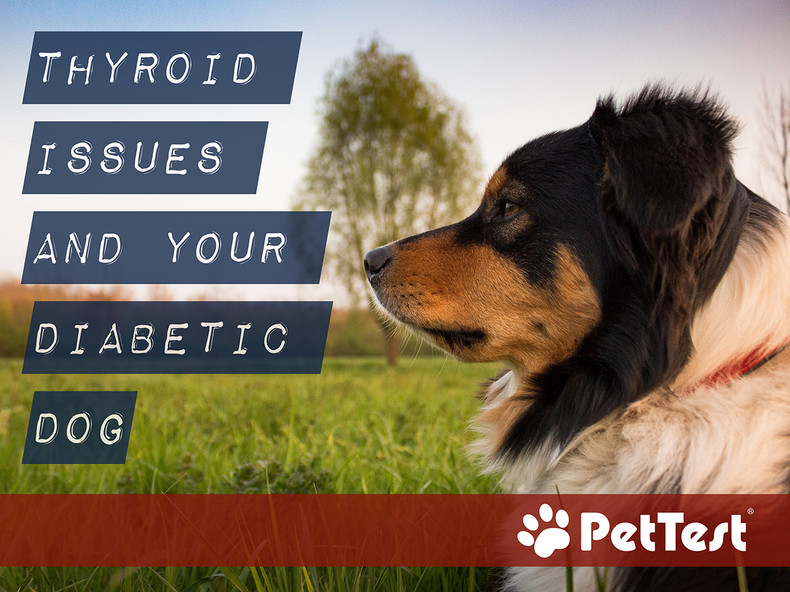Thyroid Issues and Your Diabetic Dog
Today we talk about thyroid issues and our Diabetic Pups. Being that both Canine Diabetes and hypothyroidism are later onset issues, it’s not uncommon for them to happen around the same time. I often see people referring to “insulin resistance” in their Diabetic pups. It is very rare that a dog is insulin resistant, there are however several things that can contribute to insulin being less effective. Hypothyroidism is one of those factors that can make a pup difficult to regulate.
Let’s start with symptoms: Keeping in mind that these symptoms don’t just happen overnight, they are gradual onset symptoms so may be difficult to recognize. Have a look at your pup’s last blood work. Are the cholesterol levels and triglycerides elevated? If so, this may be an indication of Hypothyroidism in your pup.
Have you noticed that your pup is:
- Losing hair or that his/her coat is thinning
- His/her coat is duller than it used to be
- Gaining weight
- Not as interested in playing or exercise
- Has trouble tolerating the cold
- Has ear infections when previously had not
- Skin infections
- Has a “droopy” face
- Constipated
Let’s start by saying here that Hypothyroidism is the most common endocrine disorder in dogs and usually appears between the ages of 4 and 10. It happens when the thyroid gland (located in the neck) produces low levels of thyroid hormone. The thyroid gland produces two hormones, thyroxine (T4) and triiodothyronine (T3). When testing for thyroid issues, a full thyroid panel needs to be done. In the body, T4 converts to T3 so it is possible that the T4 levels will show up in normal blood work as normal yet the body is not converting that T4 to T3, that’s why a full thyroid panel needs to be done.
When treating a Diabetic pup for Hypothyroidism, it is recommended that our pups be started on a lower than normal dose of thyroid meds. Thyroid hormone therapy can cause dramatic changes in the metabolic rate and being that insulin absorption is tied to metabolic rate; changes in insulin doses will likely be needed. Very careful and close monitoring needs to be done to keep our Diabetic pups safe while the doses for both medications are adjusted to appropriate levels.
How long will it take to see changes? Being that response to the thyroid meds is gradual; you may see some symptoms subside in as soon as a week to 10 days once treatment has begun. For full effect of the treatment, 6-8 weeks is a conservative timeline to see improvement of all symptoms.
The medications for Hypothyroidism are in pill form and will likely start out as a twice a day medicine. Once levels approach normal, it may or may not be backed off to once a day. As with Diabetes, every dog is different.
If you notice any of the symptoms listed above or have heard the words “insulin resistant” thrown around in reference to your pup, have the complete thyroid panel done to rule out Hypothyroidism. It’s fairly common and worth looking into especially if you are having trouble getting your pup’s BG (Blood Glucose) in range.
Notice that for most of the products, blog posts or groups that I mention, the text is linked to more information. Just click on the colored text (red or blue, depending what device you are on) and it should take you right to the item, post or group. If you have any thoughts or ideas for topics that you’d like to see covered here, please feel free to comment below or send me an email at NancyForPetTest@pharmasupply.com. As always, please “like” this blog post or any of the others that have helped you or just refreshed your memory. Look for new posts every Monday, Wednesday and Friday!
Until next time…

